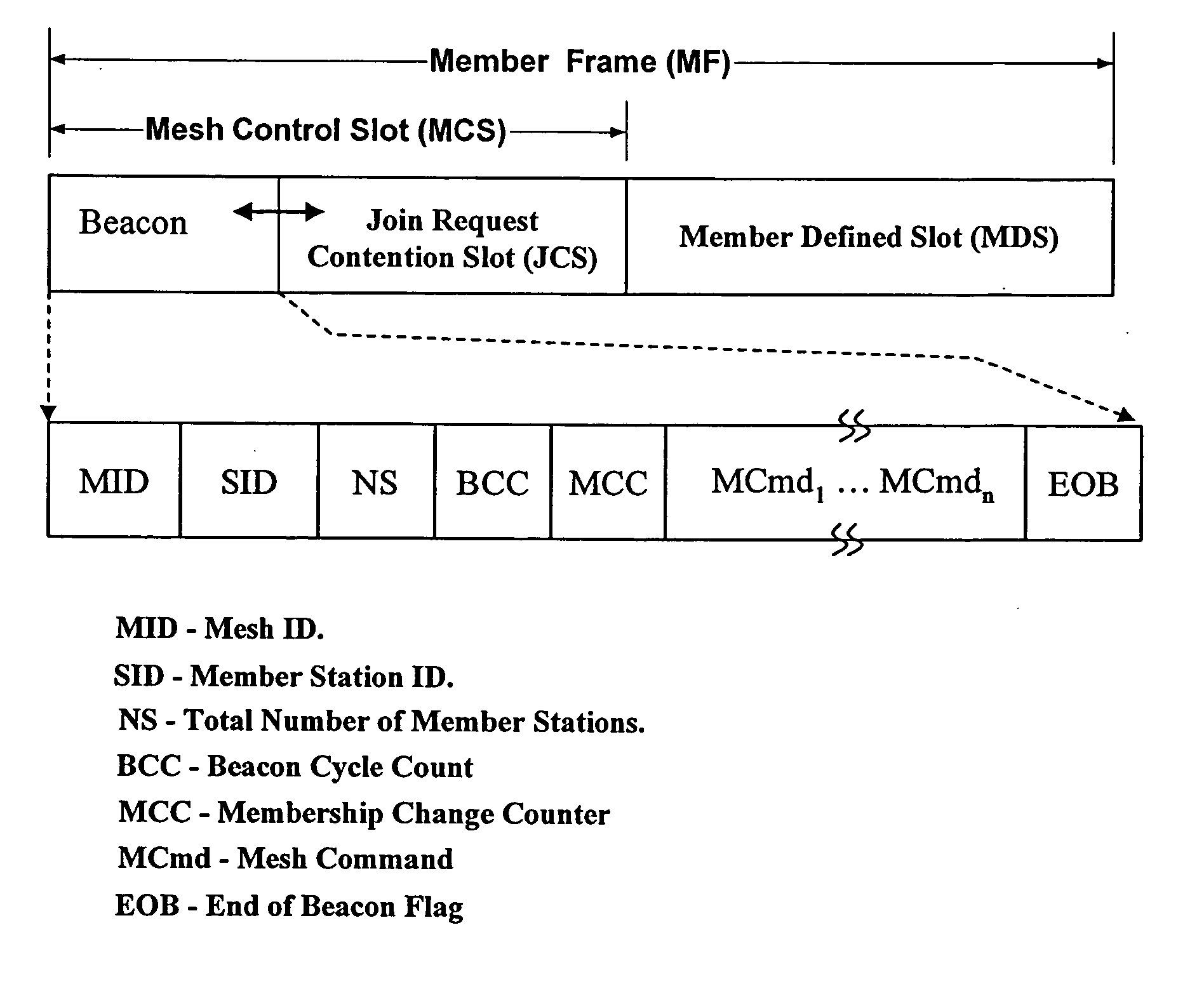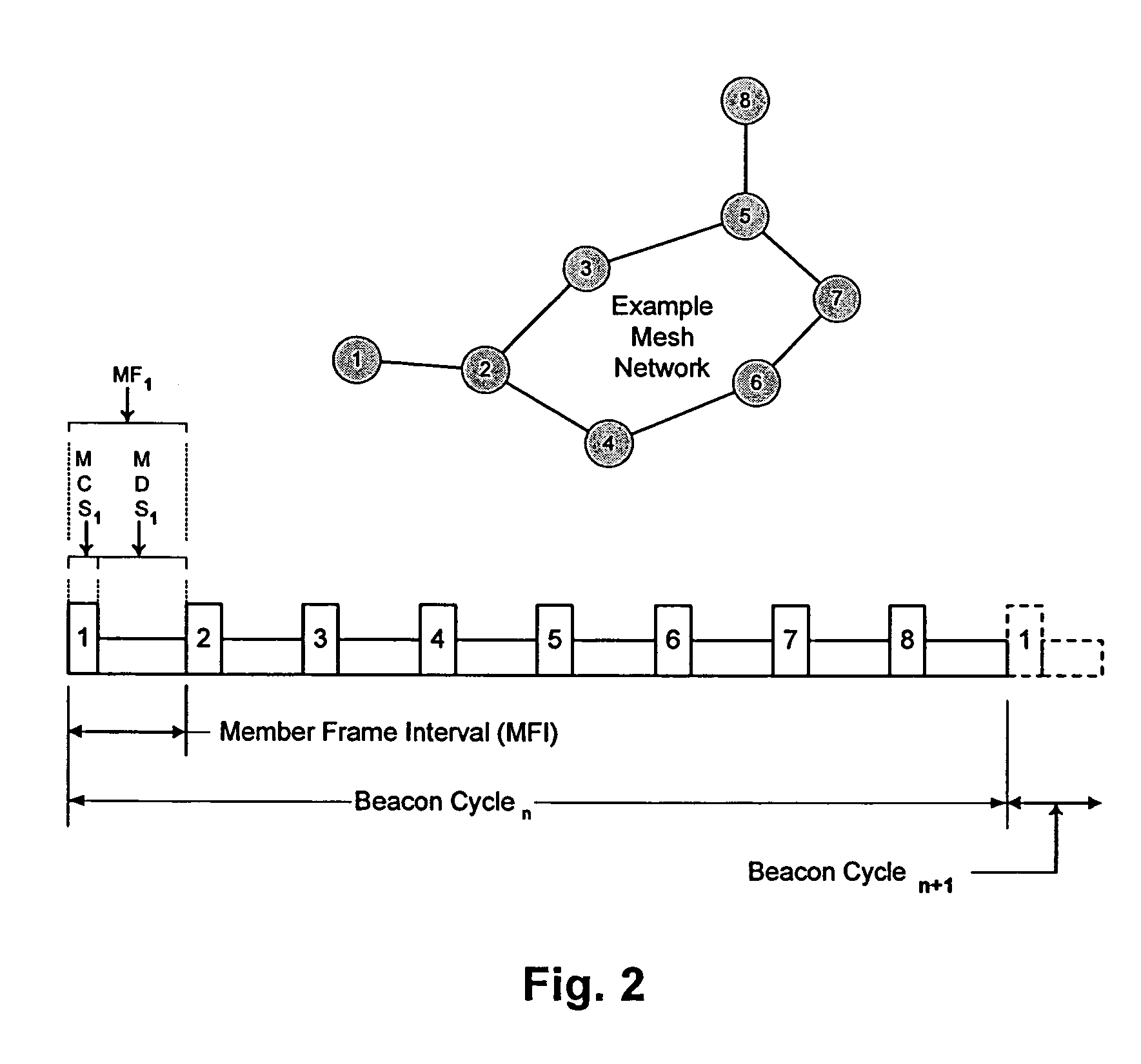Mesh network and piconet work system and method
- Summary
- Abstract
- Description
- Claims
- Application Information
AI Technical Summary
Benefits of technology
Problems solved by technology
Method used
Image
Examples
Embodiment Construction
[0059] The invention addresses the issue of networking individual stations in an ad hoc mesh wireless network without any mesh network master. The invention establishes a protocol, by which a wireless mesh network can be created at any time in any location, and the membership of the mesh network is managed in an efficient manner. The invention's protocol also provides a way to share network bandwidth without interfering with any members of the mesh network, rendering the invention both more effective and more efficient than conventional methods of creating wireless networks.
[0060] The invention's protocol handles three distinct situations regarding the an individual station and its membership in a mesh: (1) an unjoined station (US) joining an established network and thus becoming a mesh member station (MS), or two mesh networks merging into one new mesh network, (2) an MS leaving the mesh network, and (3) an MS roaming within the mesh network. To accomplish each of these changes, t...
PUM
 Login to View More
Login to View More Abstract
Description
Claims
Application Information
 Login to View More
Login to View More - R&D
- Intellectual Property
- Life Sciences
- Materials
- Tech Scout
- Unparalleled Data Quality
- Higher Quality Content
- 60% Fewer Hallucinations
Browse by: Latest US Patents, China's latest patents, Technical Efficacy Thesaurus, Application Domain, Technology Topic, Popular Technical Reports.
© 2025 PatSnap. All rights reserved.Legal|Privacy policy|Modern Slavery Act Transparency Statement|Sitemap|About US| Contact US: help@patsnap.com



